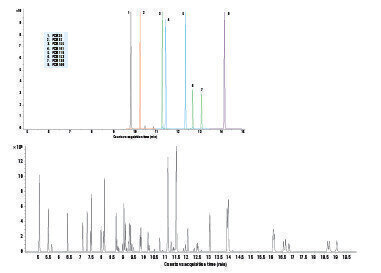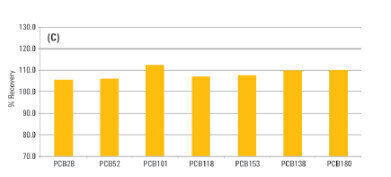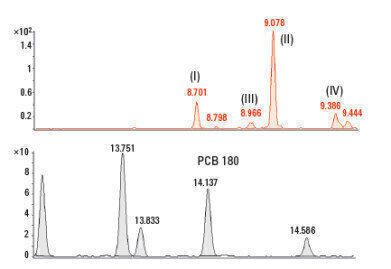Mass Spectrometry & Spectroscopy
Determination of Chemical Contaminants in Marine Shellfish Using the Agilent 7000 Triple Quadrupole GC/MS
Aug 11 2012
Monitoring Requirements
Hazardous substances contaminate the marine environment as a result of human activities, which impact the sea via direct discharges, through rivers and estuaries, or from the atmosphere. These contaminants accumulate in shellfish as they filter the water for food, presenting a toxic hazard when consumed.
The United Kingdom Clean Seas Environmental Monitoring Program (CSEMP) directly monitors a limited number of hazardous chemicals in coastal and estuarine areas. The program specifies 16 organo-chlorine compounds (OCPs), 28 polyaromatic hydrocarbons (PAHs) and 7 polychlorinated biphenyl congeners (PCBs). The Limit of Detection (LOD) requirements in shellfish are 0.1 g/kg for OCPs and PCBs, and 0.5 to 1.0 g/kg for PAHs.
The Method
A method for extracting and detecting all 51 of these contaminants in one analysis and at the required LODs has been developed by scientists at the Centre for Analytical Research and Development, National Laboratory Service, UK. It uses QuEChERS and an Agilent 7890 GC coupled to a 7000 Triple Quadrupole GC/MS system. The chromatographic method includes a post-column pressure controlled tee which enables post-run backflush.
Backflushing was used to remove higher boiling substances from the column prior to each subsequent run. Late eluting peaks are flushed out of the inlet split flow vent instead of driving them into the mass spectrometer. Accumulated chemical noise is reduced and the analysis cycle time is shortened, increasing throughput.
System uptime is also increased, due to reduced maintenance of the columns and MS detector. The suite of Agilent Capillary Flow Technology modules comprises a proprietary solution that enables easy and rapid backflushing with minimal dead volumes to maintain chromatographic resolution.
The 7890 GC was configured with a carbon dioxide cooled Multimode Inlet (MMI) and a 15 m X 0.25mm id, 0.25m DB-5MSUI capillary column. The 7000 GC/MS Triple Quadrupole system was operated in electron impact ionisation (EI) MS/MS mode using multiple reaction monitoring (MRM).
Figure 1. TIC MRM chromatograms for a calibration standard of the 51 analytes (lower) and just the PCB congeners (upper).
Method Performance
The total ion chromatogram for all MRM transitions of all analytes is shown in Figure 1. The TIC MRM chromatograms of the PCBs are shown as an inset, illustrating that the method enables detection of the required analytes.The fivepoint calibration curves using internal standards produced R2 values >.999 for all 51 analytes.
The recovery values for standards spiked into homogenised mussel tissue were in the range of 85.4 to 123.9%. Most of the recovery relative standard deviations (RSDs) were below 10%, with half of them below 5%. Representative recovery values for the PCBs are shown in Figure 2.
The required analytes can easily be detected at levels below 0.1 g/kg, which is the CSEMP LOD (Figure 3).
This method provides reproducible and sensitive detection of OCPs, PAHs and PCBs in mussel tissue. For complete details of the method, refer to Agilent Application Note 5990-7714EN at www.agilent.com.
Figure 2. Graphical representation of PCB percent recovery values.
Figure 3. Upper panel: MRM chromatograms for incurred a-HCH (I) and g-HCH (II) at 0.06 and 0.30 g/kg in mussel tissue. Peaks III and IV are traces of b-HCH and d-HCH, respectively.
Lower panel: MRM chromatograms for incurred PCB 180 at 0.14 g/kg.
Digital Edition
Lab Asia 31.2 April 2024
April 2024
In This Edition Chromatography Articles - Approaches to troubleshooting an SPE method for the analysis of oligonucleotides (pt i) - High-precision liquid flow processes demand full fluidic c...
View all digital editions
Events
Apr 28 2024 Montreal, Quebec, Canada
May 05 2024 Seville, Spain
InformEx Zone at CPhl North America
May 07 2024 Pennsylvania, PA, USA
May 14 2024 Oklahoma City, OK, USA
May 15 2024 Birmingham, UK




















